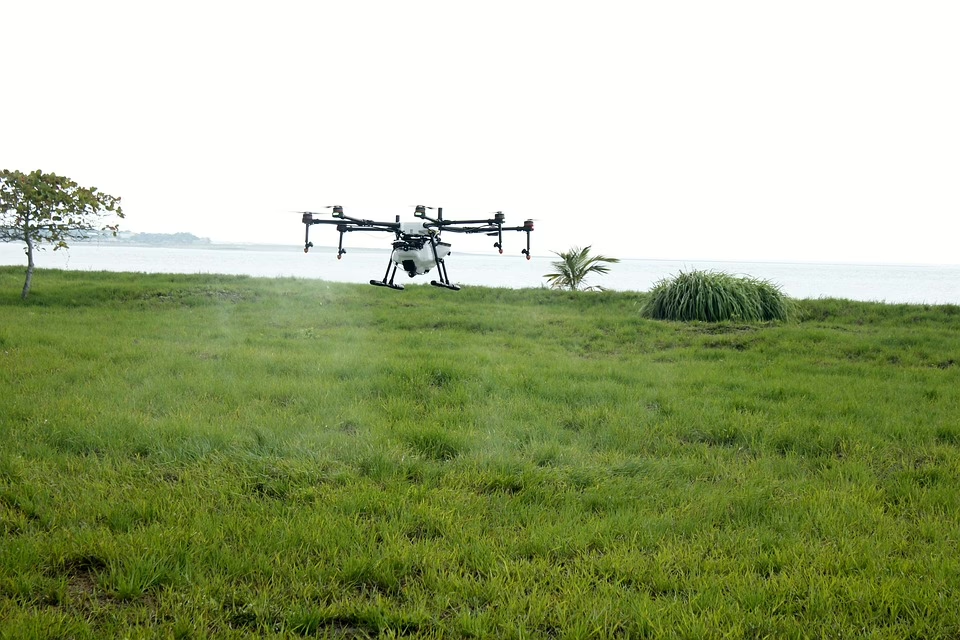Why Every Business Should Consider Drone Integration: A Strategic Overview
Introduction
In recent years, the proliferation of drone technology has sparked a revolution across various industries, transforming traditional operations and presenting new opportunities for efficiency, cost-saving, and customer engagement. From agriculture to logistics, retail, and even real estate, the potential applications of drones are seemingly endless. This article delves into the strategic advantages of drone integration, the challenges businesses may face, and actionable steps for implementation.
Understanding Drone Technology
Drones, or unmanned aerial vehicles (UAVs), are aircraft that can be controlled remotely or can fly autonomously using software-controlled flight plans. They come equipped with various technologies, including cameras, sensors, GPS, and even sophisticated data analytics capabilities. This versatility allows businesses to leverage drones for purposes such as aerial photography, data collection, and even delivery services.
Types of Drones
-
Multi-rotor Drones: These are commonly used for aerial photography and surveying. They can hover and maneuver in tight spaces.
-
Fixed-wing Drones: These are often used for larger land surveys and can cover more ground than multi-rotor drones.
-
Hybrid Drones: Combining elements of both multi-rotor and fixed-wing drones, these are versatile solutions suited for a range of applications.
Applications Across Industries
- Agriculture: Crop monitoring, precision farming, and livestock management.
- Logistics: Last-mile delivery, warehouse surveillance, and inventory management.
- Construction: Site surveys, project tracking, and safety inspections.
- Real Estate: Aerial photography, virtual tours, and marketing.
- Emergency Services: Search and rescue operations, disaster response, and surveillance.
Strategic Benefits of Drone Integration
1. Cost Efficiency
One of the most significant benefits of drone integration is the reduction in costs associated with labor and equipment. Drones can complete tasks that would otherwise require a substantial workforce or expensive machinery. For instance, agricultural drones can monitor crop health and help farmers make more informed decisions without the need for manual labor or continuous field visits.
2. Enhanced Data Collection
Drones equipped with high-resolution cameras and sensors can gather data quickly and accurately, providing businesses with essential insights. In real-time mapping, for instance, drones can create detailed topographic maps that would take human teams much longer to compile. The ability to collect large volumes of data quickly enables businesses to make informed decisions faster.
3. Improved Safety
In industries such as construction and emergency services, drones can perform hazardous tasks that would put human workers at risk. For example, drones can inspect tall structures, such as cranes and wind turbines, without exposing workers to dangerous heights. This not only improves safety but can also reduce liability and insurance costs for businesses.
4. Increased Efficiency
Drones can streamline operations in various sectors by reducing the time taken to complete tasks. In logistics, for example, drones can facilitate last-mile delivery in urban environments, significantly decreasing delivery times and improving customer satisfaction. The ability to deploy drones for repetitive tasks allows human labor to focus on more complex and value-driven activities.
5. Enhanced Customer Engagement
Drones can offer unique marketing opportunities by providing stunning aerial footage or facilitating innovative delivery options. Thirteen-time Emmy Award winner Michael D. Miller noted that “the visual storytelling afforded by aerial photography can captivate audiences, thus enhancing customer engagement.” Such creative approaches can differentiate a business in a competitive landscape.
Challenges of Drone Integration
While the benefits of drone integration are clear, businesses must also address several challenges, including:
1. Regulatory Hurdles
Drones are subject to various regulations set by aviation authorities, which can differ significantly by country and region. Understanding these regulations and obtaining the necessary licenses can be daunting for businesses. Companies should invest time in familiarizing themselves with the legal landscape surrounding drone usage.
2. Technical Limitations
Drones are not without their technical limitations. Battery life can be restrictive for prolonged operations, and weather conditions can impact drone functionality. Businesses will need to invest in high-quality drones and possibly ground support systems to address these issues.
3. Public Perception and Privacy Concerns
The adoption of drones raises privacy concerns among the public, and businesses must take measures to ensure compliance with privacy regulations and public sentiments. Engaging with stakeholders transparently can help alleviate concerns and foster a positive perception of drone use in the community.
4. Skill Gap and Training
The successful integration of drones into business operations requires a workforce trained in their use. Companies will need to invest in training programs to ensure their employees are capable of operating drones safely and efficiently.
Actionable Steps for Drone Integration
1. Assess Your Business Needs
Before integrating drone technology, conduct a comprehensive needs assessment to determine how drones can benefit your specific operations. Identify areas where efficiency can be improved or costs can be reduced.
2. Research Drone Options
Explore the different types of drones available and identify the best models for your needs. Specialized drones may be crucial for specific applications, such as agricultural monitoring or aerial photography.
3. Understand Regulatory Requirements
Thoroughly research the regulatory landscape in your region. Be aware of any licenses or certifications required for drone operation. Consulting with a legal expert in aviation law may also be beneficial.
4. Develop a Training Program
Invest in training programs to equip your workforce with the skills necessary to operate drones safely. This may include formal training courses, certification programs, and hands-on experience.
5. Pilot Test Programs
Before a full-scale deployment, conduct pilot tests to evaluate the efficacy of drones within your operations. Monitor performance metrics closely and gather feedback from employees involved in the pilot program.
6. Evaluate ROI
After implementing drone technology, continually assess the return on investment. Analyze the data collected to understand the impact of drone operations on your business, adjusting strategies as necessary.
Case Studies: Successful Drone Integration
Case Study 1: Precision Agriculture
A leading agricultural company implemented drones to monitor crop health and optimize irrigation practices. By utilizing aerial imagery, they identified areas requiring attention, significantly reducing water usage and increasing crop yields by 20% within a single season.
Case Study 2: Logistics Revolution
A startup in the logistics sector integrated drones into its delivery system. By using drones for last-mile delivery, they cut delivery times from days to hours, achieving a customer satisfaction rate of 95%. The company also reported a 30% reduction in operational costs.
Case Study 3: Construction Safety
A construction firm adopted drones to conduct site surveys and monitor job progress. The drones provided aerial views of the construction site, allowing for timely identification of safety hazards. As a result, the firm saw a 40% decrease in workplace accidents.
Future Trends in Drone Technology
1. AI Integration
The future of drone technology will likely see the increased integration of artificial intelligence (AI). Drones equipped with AI can analyze data in real-time, making autonomous decisions on flight paths and data collection methods.
2. Advanced Sensors and Cameras
As technology progresses, drones will be equipped with even more powerful sensors and cameras, allowing for enhanced data collection and analysis capabilities. This will make them indispensable tools for various industries, including healthcare and environmental monitoring.
3. Expanded Delivery Capabilities
With the rise of e-commerce, drone delivery is set to become more mainstream. Companies like Amazon and Walmart are investing heavily in drone technology, predicting it will revolutionize the delivery landscape within the next decade.
4. Urban Air Mobility
As cities become more congested, urban air mobility using drones for transportation will likely gain traction. This could reduce traffic congestion and provide rapid transit options for urban dwellers.
Conclusion
The strategic integration of drones into business operations offers numerous advantages, from cost savings and enhanced data collection to improved safety and customer engagement. While challenges exist, the potential for innovation and increased efficiency makes drone technology a compelling consideration for businesses across industries. As the regulatory landscape evolves and technological capabilities expand, the future of drone integration looks promising. Investing in drones today could position companies to be at the forefront of their industries tomorrow.
Sources
- Кеплінг, Дж. “Дрони та їх використання в бізнесі.” Журнал сучасних технологій, 2021.
- Сміт, А. “Економічні переваги безпілотних технологій в агрогалузі.” Аграрна економіка, 2020.
- Ван Морс, Л. “Вплив дронів на логістичний сектор.” Транспорт і логістика, 2019.
- НАТОшні крила: Як дрони змінюють будівельну індустрію. Будівельний журнал, 2019.
- Федорова, Е. “Обмеження та можливості для використання дронів у бізнесі.” Бізнес сьогодні, 2022.
The information included in this article is intended for educational purposes and should be interpreted in conjunction with professional advice from experts in the respective fields.


























Add Comment